Description
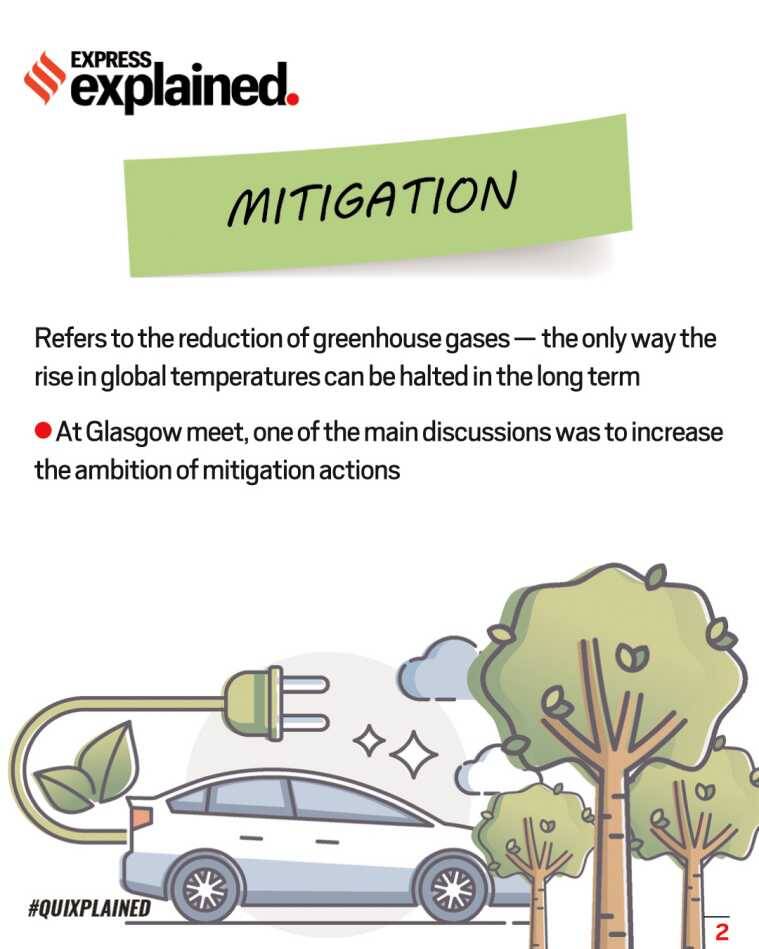
Copyright infringement is not intended
Context: Delhi witnesses spike in air pollution.
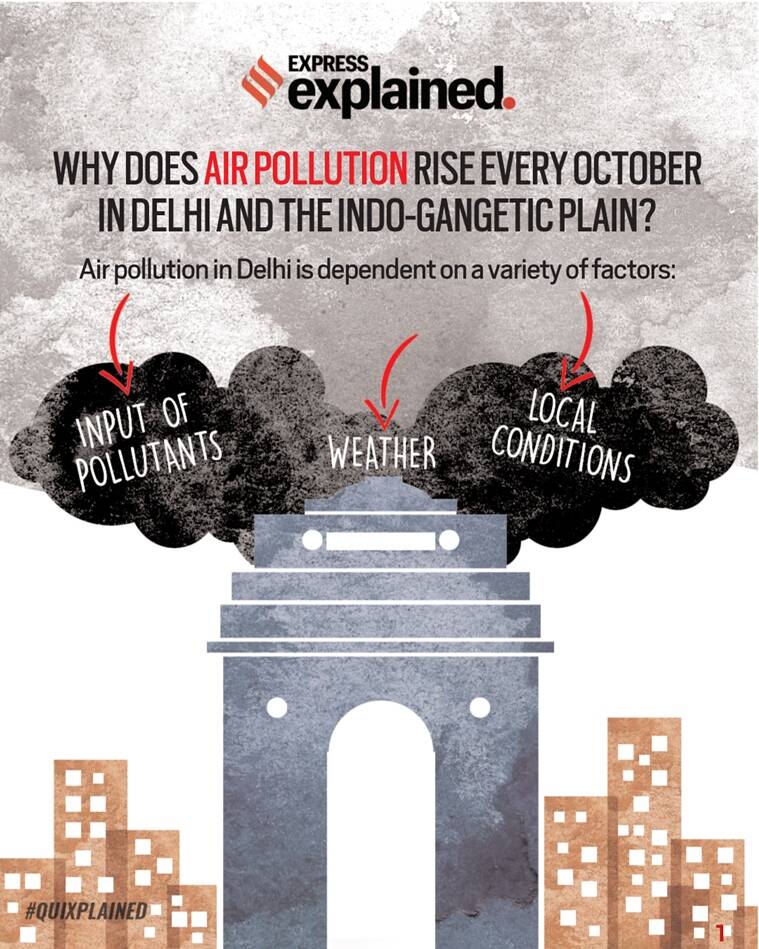
General factors that play role in pollution spikes are:
- Extremely low temperatures and low mixing height, with moderate to dense fog in the morning.
- Low temperature and moisture in the air traps pollutants close to the surface.
What conditions lead to smog in late October and early November?
- Monsoon withdraws, and wind direction changes to north-westerly that bring emissions from stubble fires in Punjab and Haryana.
- These winds are colder and dryer as compared to the south-easterly winds blowing earlier, leading to a drop in temperature by the end of October. The winds also bring pollutants from stubble burning towards Delhi.
- Firecracker burning on Diwali, celebrated during late October or early November, combined with stubble emissions lead to a smog.
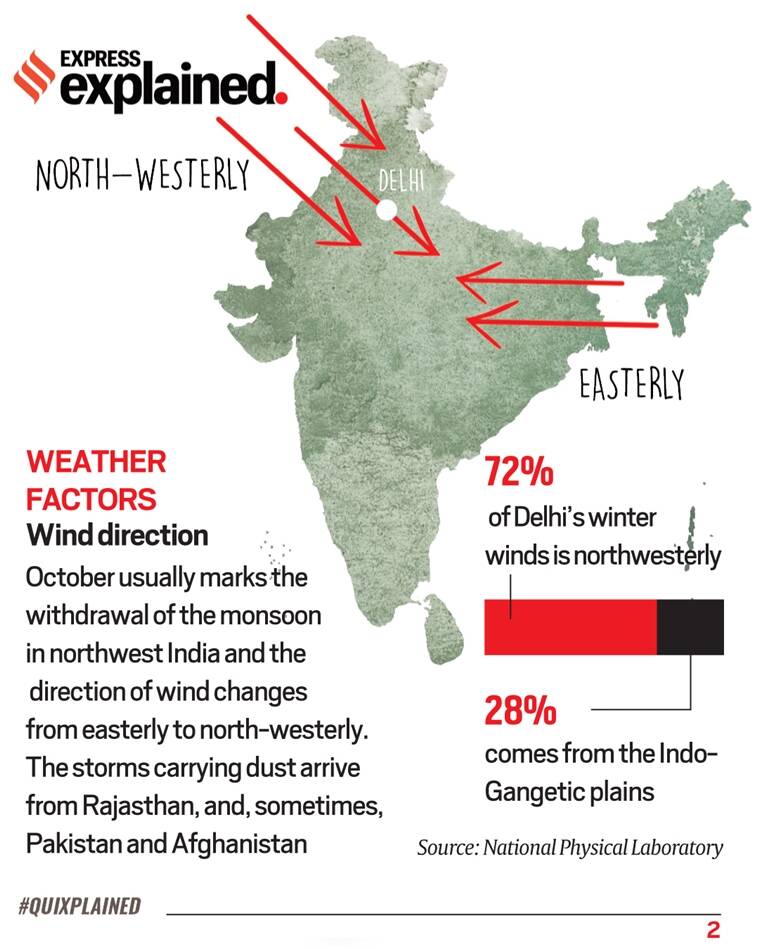
Why it spikes in the end of December?
- Stubble burning has completely stopped by this time of the year.
- Pollution spikes largely becauses temperatures dip to 1-3 degrees Celsius.
- Colder air slows down dispersal of pollutants and brings down the mixing height, trapping pollutants close to the ground.
- Delhi also sees fog spells at this time, as the moisture also traps pollutants in the air.
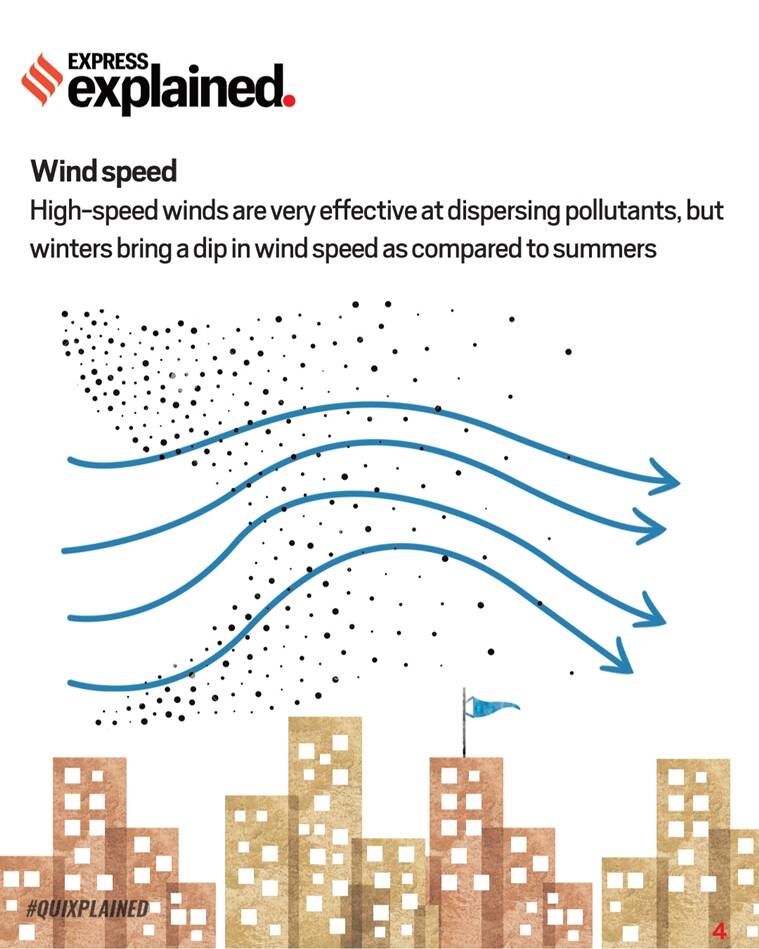
What is the role of temperature?
- Low temperatures not only make the air heavier and slows down pollutants, but it also brings down the mixing height -- an invisible layer of the atmosphere within which pollutants mix.
- The closer this layer drops to the surface, the lesser the space for pollutants to mix freely.
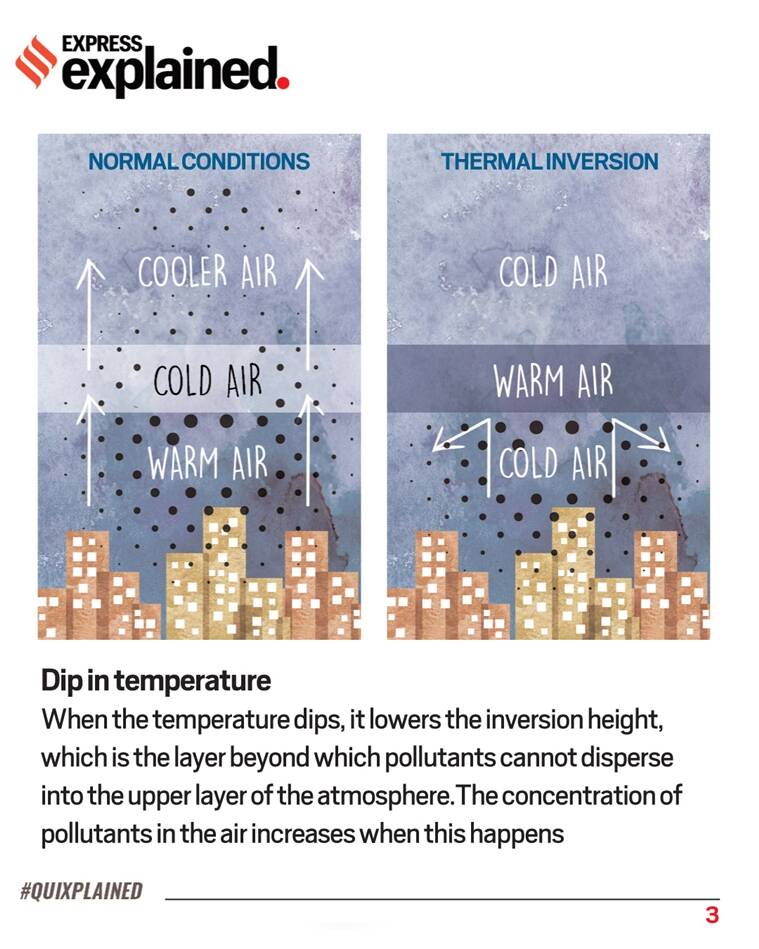
How does fog causes spike in pollution?
- Moisture in the air traps pollutants and makes them heavier, not allowing them to disperse easily.
- This can lead to a constant haze in the air that dissipates only when there is adequate sunlight leading to warmer air.
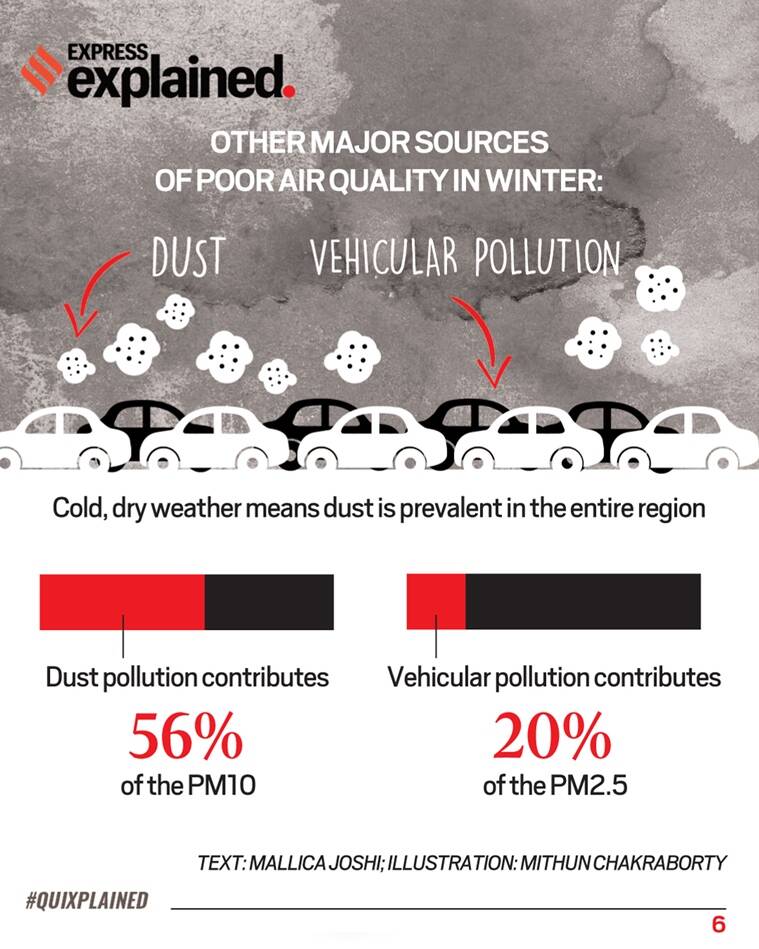
How far can stubble emissions travel?
- Satellite data shows stubble emissions can travel all the way across the Indo-Gangetic plains. However, they start dispersing after a few hundred kilometres, and generally lose their potency after crossing Delhi-NCR.
- The longer the distance they travel, the lesser their impact.
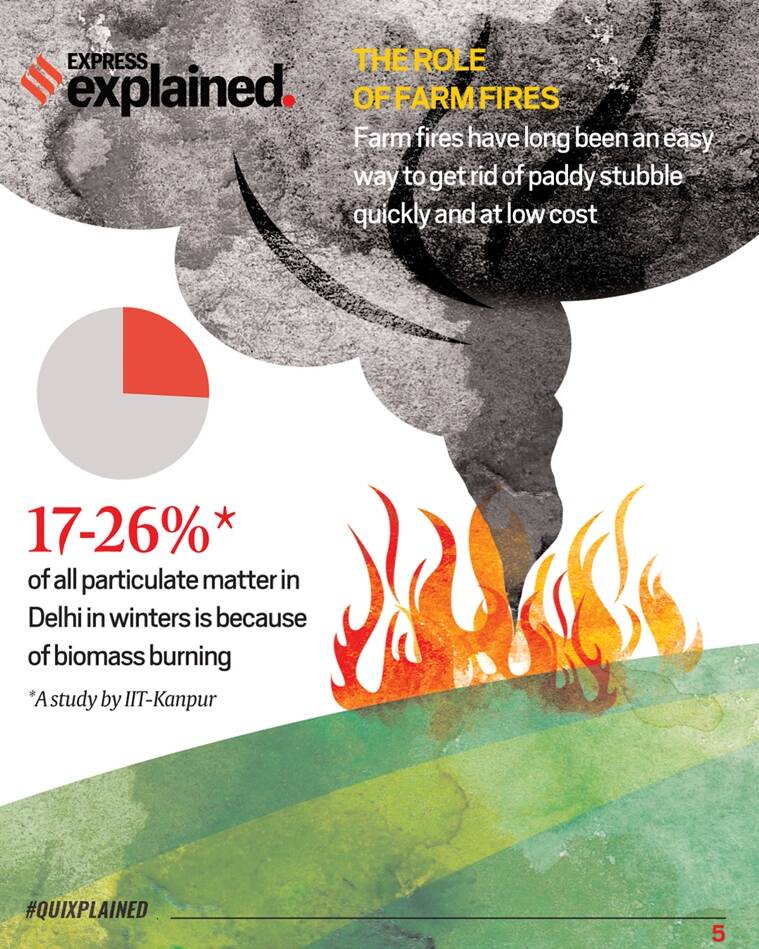
https://www.hindustantimes.com/cities/delhi-news/explained-delhi-s-air-pollution-spikes-yearround-101637000903417.html











